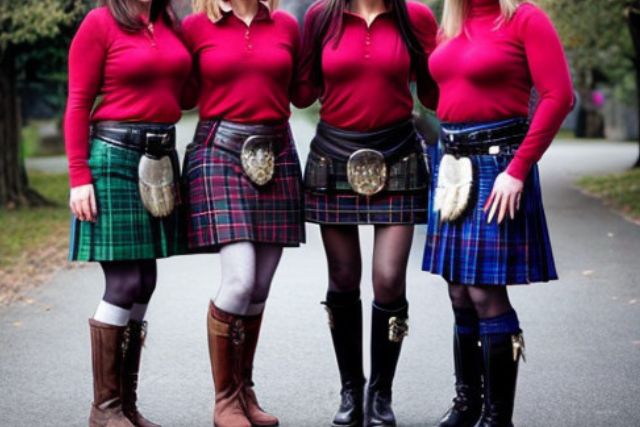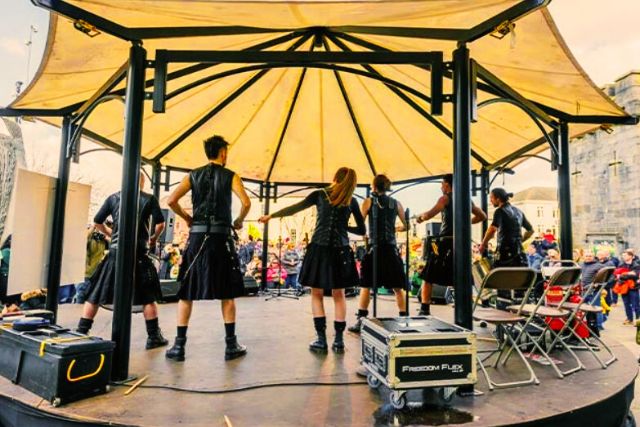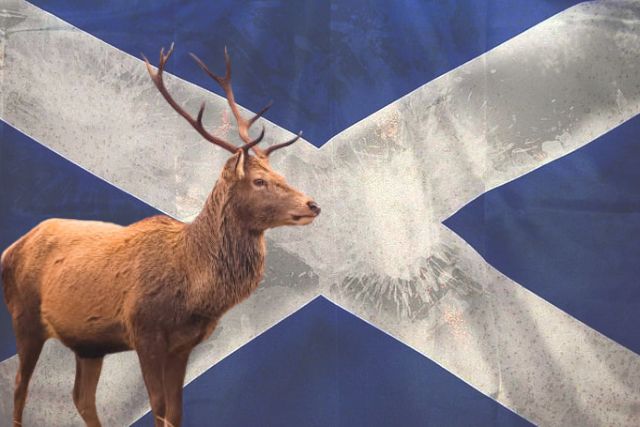Unveiling the rich tapestry of Scottish tradition and heritage, this article delves into the captivating realm of Scottish attire. Immerse yourself in the history and significance of tartan patterns, as we unravel the timeless allure of the iconic kilt. Discover the traditional accessories that lend a touch of authenticity.
Delving into regional variations and contemporary interpretations, we invite you to explore how to infuse Scottish attire into your wardrobe, fostering a sense of belonging to this esteemed lineage.
The History of Scottish Attire
One cannot underestimate the significance of tartan in the history of Scottish attire. Scottish attire, also known as Highland dress, has a rich and storied tradition that dates back centuries. From the distinctive kilt to the elegant tartan patterns, Scottish attire has become an iconic symbol of Scottish culture and identity.
Traditionally, Scottish attire for men includes a kilt, sporran, jacket, and accessories such as a sgian-dubh and brogues. For ladies, Scottish attire may consist of a tartan skirt or dress, accompanied by a blouse and accessories.
Today, Scottish attire is not only worn for formal occasions or traditional events, but it is also available for sale to anyone wishing to embrace their Scottish heritage or simply enjoy the timeless elegance of tartan. The dress code for Scottish attire varies depending on the occasion, but it is always steeped in tradition and pride.

The Significance of Tartan Patterns
Tartan patterns hold great cultural significance as they not only reflect the unique heritage of Scottish attire, but also serve as a visual representation of clan affiliations and regional identities. Here are four key aspects that highlight the significance of tartan patterns:
- Clan Affiliations: Tartan patterns are closely associated with Scottish clans, with each clan having its own distinct tartan design. Wearing a specific tartan pattern helps individuals proudly display their clan affiliations, fostering a sense of belonging and shared heritage.
- Regional Identities: Tartan patterns also represent different Scottish regions. Each region has its own distinctive tartan design, reflecting the history, culture, and traditions of that specific area. By wearing their regional tartan, individuals can showcase their connection to a particular Scottish region.
- Historical Symbolism: Tartan patterns have a rich history dating back centuries. They were worn by Scottish warriors as a symbol of their bravery and loyalty. Today, tartan patterns continue to evoke a sense of tradition and pride, reminding individuals of their Scottish roots.
- Fashion and Identity: Tartan patterns have transcended their historical significance and become iconic symbols of Scottish fashion worldwide. They are often incorporated into various clothing items, accessories, and even home decor, allowing individuals to express their Scottish identity and connection to their heritage.
Overall, tartan patterns play a vital role in Scottish culture, serving as a visual representation of clan affiliations, regional identities, historical symbolism, and personal fashion choices. They provide a sense of belonging and pride for those who embrace their Scottish heritage.
Exploring the Iconic Kilt
The kilt, a quintessential Scottish garment, has long been revered as a symbol of national pride and cultural identity. This traditional attire consists of a pleated, knee-length skirt made from tartan fabric, which is a pattern unique to each Scottish clan.
The origins of the kilt can be traced back to the 16th century, when it was worn by Highlanders as a practical and versatile garment for their rugged lifestyle. Today, kilts are worn for formal occasions, such as weddings and Highland games, as well as for everyday wear. They are often paired with accessories like sporrans, kilt pins, and tartan hose to complete the traditional Scottish look.
The kilt continues to be a beloved symbol of Scottish heritage, fostering a sense of belonging and cultural pride among the Scottish people.
Traditional Scottish Accessories: The Sporran
The sporran, an essential component of traditional Scottish attire, adds both functionality and style to the Highland dress. It is a small pouch that is worn around the waist, hanging in front of the kilt. Here are four key features of the sporran that contribute to its significance:
- Material: Sporrans are typically made from leather, fur, or a combination of both. The choice of material depends on the occasion and personal preference.
- Design: Sporrans come in various designs, ranging from simple and elegant to intricately decorated. They often feature ornate metalwork, tassels, and Celtic motifs, reflecting Scotland’s rich cultural heritage.
- Functionality: The sporran serves as a practical accessory, providing storage space for personal belongings, such as keys, wallets, and phones. It also serves as a counterbalance to the kilt, ensuring it hangs properly.
- Symbolism: The sporran symbolizes Scottish tradition and pride, representing the wearer’s connection to their heritage. It is a distinct feature of Highland dress, adding a touch of authenticity to any Scottish outfit.
Traditional Scottish Accessories:
One notable feature of traditional Scottish attire is the sgian-dubh, a small dagger tucked into the top of the kilt hose, which is said to represent the wearer’s resilience and self-defense. The sgian-dubh, which means “black knife” in Scottish Gaelic, has a rich history and cultural significance. It is often worn as part of formal Highland dress for special occasions like weddings and celebrations.
The Role of Scottish Attire in Cultural Celebrations
Scottish attire plays a crucial role in cultural celebrations, as it not only showcases the rich heritage and traditions of Scotland but also fosters a sense of unity and pride among the participants.
The distinct elements of Scottish attire, such as kilts, tartans, and accessories, create a visual representation of Scotland’s history and identity. When people wear these traditional garments, they feel connected to their roots and become part of a larger community. The sight of kilts swirling in vibrant tartan patterns, sporran pouches hanging from belts, sgian-dubh knives tucked into socks, and Tam o’ Shanters adorning heads, evokes a sense of nostalgia and belonging.
Regional variations in Scottish attire highlight the diverse cultural heritage within Scotland, with different tartan patterns representing specific clans or regions. These variations add depth and complexity to the overall tapestry of Scottish attire, reflecting the unique traditions of each community.
Regional Variations in Scottish Attire
Several regional variations in Scottish attire highlight the diverse cultural heritage and traditions within Scotland. From the Highlands to the Lowlands, each region has its own unique style that reflects its history and customs.
In the Highlands, the traditional attire consists of the iconic kilt, sporran, and tartan patterns, representing clan affiliations. The Lowlands, on the other hand, have a more understated style, with tailored jackets and trousers. The Western Isles showcase their maritime heritage with seafaring-inspired outfits, including the distinctive Aran sweater. In the Borders region, the attire is influenced by both Scottish and English traditions, with a mix of tartan and tweed.
These regional variations in Scottish attire not only serve as a way to express cultural identity but also foster a sense of belonging and pride in one’s heritage.
The Influence of Scottish Attire on Fashion
The significant impact of Scottish attire on fashion can be observed through the incorporation of traditional tartan patterns and kilt-inspired silhouettes in contemporary clothing designs. This fusion of Scottish heritage with modern fashion has created a sense of belonging and cultural appreciation for those who wear these garments.
Tartan patterns: The vibrant and distinct tartan patterns, which represent different Scottish clans, have become a popular choice for designers. Whether it is a tartan blazer, skirt, or even accessories like scarves and handbags, these patterns add a touch of Scottish charm to any outfit.
Kilt-inspired silhouettes: The kilt, a traditional Scottish garment, has inspired designers to create skirts and dresses with its distinctive pleated structure. These garments not only pay homage to Scottish culture but also provide a unique and stylish look.
Scottish-inspired accessories: From tartan-printed socks to traditional sporran-inspired handbags, accessories have embraced the Scottish influence. These accessories allow individuals to incorporate a touch of Scottish heritage into their outfits, creating a sense of connection and belonging.
Scottish fashion events: Various fashion events and shows celebrate Scottish attire, showcasing the influence it has on contemporary fashion. These events provide a platform for designers to showcase their Scottish-inspired collections and allow individuals to immerse themselves in the rich Scottish fashion culture.
Modern Interpretations of Scottish Attire
One can appreciate the creativity and innovation that arise when modern designers interpret Scottish attire, as they blend traditional elements with contemporary fashion trends. Many designers have taken inspiration from the iconic tartan patterns, kilts, and Scottish accessories, and have incorporated them into their collections in unique and stylish ways.
For example, Alexander McQueen’s Fall/Winter 2021 collection showcased tartan-inspired pieces with a modern twist, such as tailored blazers, pleated skirts, and accessories like scarves and hats. Similarly, brands like Burberry and Pringle of Scotland have embraced Scottish heritage by incorporating traditional motifs and materials into their designs, while still maintaining a modern aesthetic.
These reinterpretations of Scottish attire not only pay homage to the rich cultural heritage but also provide individuals with a sense of belonging and connection to their heritage.
Transitioning into the subsequent section about how to incorporate Scottish attire into your wardrobe, let’s explore some practical tips and ideas.
How to Incorporate Scottish Attire Into Your Wardrobe
To infuse your wardrobe with elements of Scottish attire, consider incorporating traditional Scottish textiles like tartan and tweed into your everyday outfits. These fabrics not only add a touch of heritage and authenticity to your style, but they also evoke a sense of belonging and connection to Scottish culture.
Here are four ways you can incorporate Scottish attire into your wardrobe:
- Tartan trousers or skirts: Opt for a pair of tartan trousers or a tartan skirt to add a pop of Scottish charm to your outfit. Pair them with a simple blouse or sweater for a balanced look.
- Tweed blazers or jackets: Invest in a well-tailored tweed blazer or jacket to instantly elevate your ensemble. The rich texture and earthy tones of tweed add a touch of sophistication and ruggedness to any outfit.
- Tartan accessories: Add a hint of Scottish flair with tartan accessories such as scarves, hats, or even handbags. These small accents can make a big impact and give your outfit a unique twist.
- Kilt-inspired pieces: Experiment with kilt-inspired pieces like pleated skirts or dresses. These garments pay homage to the traditional Scottish kilt and add a touch of femininity and elegance to your look.
Conclusion:
Scottish attire is a captivating testament to the rich history and cultural heritage of Scotland. From the iconic kilt to the traditional accessories like the sporran and sgian-dubh, each element tells a story and carries symbolic significance.
The influence of Scottish attire on fashion is undeniable, with modern interpretations bringing a touch of Scottish charm to contemporary wardrobes. By incorporating Scottish attire into your own wardrobe, you can embrace the timeless elegance and distinctive charm of this unique cultural tradition.



